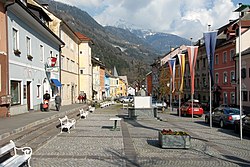
Spittal an der Drau is a town in the western part of the Austrian federal state of Carinthia. It is the administrative centre of Spittal an der Drau District, Austria's second largest district (Bezirk) by area.

Lienz is a medieval town in the Austrian state of Tyrol. It is the administrative centre of the Lienz district, which covers all of East Tyrol. The municipality also includes the cadastral subdivision of Patriasdorf.
Bezirk Spittal an der Drau is an administrative district (Bezirk) in the state of Carinthia, Austria.
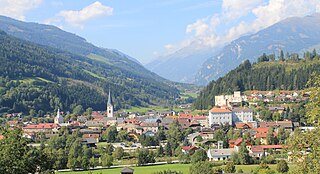
Gmünd in Kärnten is a municipality and historic town in the district of Spittal an der Drau, in the Austrian state of Carinthia.
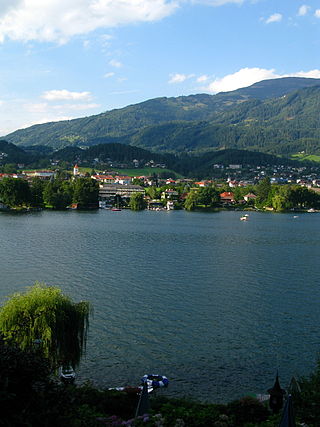
Seeboden am Millstätter See is a market town in Spittal an der Drau District in Carinthia, Austria.

Moosburg is a market town in the Klagenfurt-Land district in the Austrian state of Carinthia.

Flattach is a municipality in Spittal an der Drau District in the Austrian state of Carinthia.

Greifenburg is a market town in the district of Spittal an der Drau in the Austrian state of Carinthia.

Krems in Kärnten is a municipality in the district of Spittal an der Drau in Carinthia in Austria.

Mallnitz is a municipality in the Spittal an der Drau District in Carinthia, Austria.

Oberdrauburg is a market town in the district of Spittal an der Drau at the western rim of the Austrian state of Carinthia.

Reißeck is a municipality in the district of Spittal an der Drau in Carinthia, Austria.

Rennweg am Katschberg is a market town in the district of Spittal an der Drau in Carinthia, Austria.
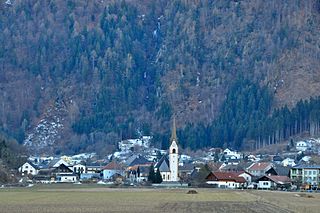
Sachsenburg is a market town in the district of Spittal an der Drau in Carinthia, Austria.

Bad Bleiberg is a market town in the district of Villach-Land, in Carinthia, Austria. Originally a mining area, especially for lead, Bad Bleiberg today due to its hot springs is a spa town.

Wernberg is a municipality in the district of Villach-Land in the Austrian state of Carinthia.
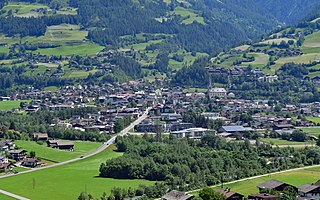
Matrei in Osttirol is a market town in the Lienz District in the Austrian state of Tyrol. It is situated about 29 km (18 mi) north of Lienz within the Hohe Tauern mountain range of the Central Eastern Alps. Its municipal area comprises parts of the Granatspitze Group and the Venediger Group, with the Großvenediger peak as its highest point. The population largely depends on tourism, seasonal agriculture and forestry.
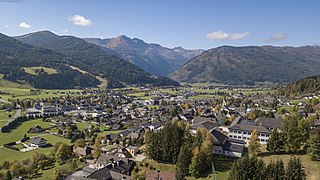
Sankt Michael im Lungau is a market town in the district of Tamsweg in the Austrian state of Salzburg.

Niederfalkenstein Castle is a medieval castle near Obervellach in Carinthia, Austria. It is part of the larger Falkenstein fortification complex; while the main fortress of Oberfalkenstein today is a ruin, the lower barbican of Niederfalkenstein is largely preserved.

The Möll is a river in northwestern Carinthia in Austria, a left tributary of the Drava. Its drainage basin is 1,100.8 km2 (425.0 sq mi).
